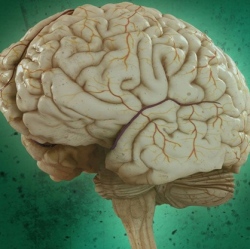
Researchers have reversed some of the symptoms of Alzheimer’s disease in mice using focused ultrasound. As KurzweilAI reported in 2012, Sunnybrook Research Institute scientists used MR imaging-guided focused ultrasound to temporarily open the blood-brain barrier (BBB), allowing for more effective delivery of drugs to the brain.
The method uses a microbubble contrast agent. The microbubbles vibrate when they pass through the ultrasound beam, temporarily creating an opening in the BBB for the drugs to pass through. In addition, this combination of ultrasound and microbubbles has been shown to increase the number of new neurons and the dendrite length.
In the new study, Kullervo Hynynen, Ph.D., a medical physicist at Sunnybrook Research Institute, and his collaborators studied the effects of using MR imaging-guided focused ultrasound on the hippocampus of transgenic (TgCRND8) mice.
Mice with this genetic variant have increased plaque on their hippocampus, the part of the brain that helps convert information from short-term to long-term memory; they also display symptoms similar to Alzheimer’s such as memory impairment and learning reversal. That allows these transgenic mice to be used as an animal model for Alzheimer’s disease.
The researchers used MR imaging-guided focused ultrasound with microbubbles to open the BBB and treat the hippocampus of the mice. The hippocampus is divided into two parts, one in each hemisphere of the brain. They found the treatment led to improvements in cognition and spatial learning in the transgenic mice, potentially caused by reduced plaque and increased neuronal plasticity due to the focused ultrasound treatment.
They found no tissue damage or negative behavioral changes in the mice due to the treatments in either the transgenic mice or the control (nontransgenic) mice. Both groups of mice benefited from increased neuronal plasticity, which confirms the previous research on the effects of MR imaging-guided focused ultrasound on plasticity in healthy mice.
